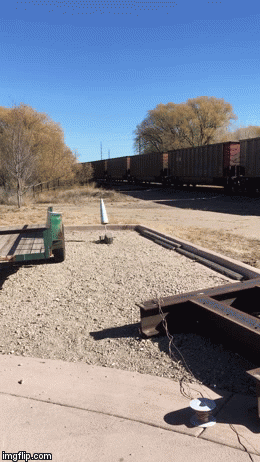AlphaHybrids
Well-Known Member
- Joined
- Nov 29, 2009
- Messages
- 1,573
- Reaction score
- 97
A long time ago in another epoch of HPR, there was an article on something called the Z-Pard. Essentially an aluminum piston recover device using BP. Advantages were very reliable operation, less BP used, you don't have to pressurize the entire recovery compartment and positive deployment. I've been using them for a bit, but don't really see them in other rockets. I think it is because recovery is the least thought out, though most important, part of HPR people stuff a parachute in a rocket and 'blow it up or blow it out'.
Here is an animated GIF of a test today. The piston was 3/4" tube with a 1/2" tube inside it. The stroke was 15 inches.
 https://imgflip.com/gifgenerator
https://imgflip.com/gifgenerator
I was going for the tree but missed. Some statistics about the nosecone. 6" diameter, prototype nosecone that was rejected because of concentric alignment issues. Wood/Foam/Tube construction. Weight of the nosecone was approximately 2 pounds.
The nosecone really gets up and goes. The best part is that to get this effect it took 0.8 grams of 4FFFF BP. I don't have a calculator handy but I know it would take much, much more to get the same effect if I was pressurizing the 24" long x 6" diameter parachute compartment.
Edward

Here is an animated GIF of a test today. The piston was 3/4" tube with a 1/2" tube inside it. The stroke was 15 inches.
 https://imgflip.com/gifgenerator
https://imgflip.com/gifgeneratorI was going for the tree but missed. Some statistics about the nosecone. 6" diameter, prototype nosecone that was rejected because of concentric alignment issues. Wood/Foam/Tube construction. Weight of the nosecone was approximately 2 pounds.
The nosecone really gets up and goes. The best part is that to get this effect it took 0.8 grams of 4FFFF BP. I don't have a calculator handy but I know it would take much, much more to get the same effect if I was pressurizing the 24" long x 6" diameter parachute compartment.
Edward




